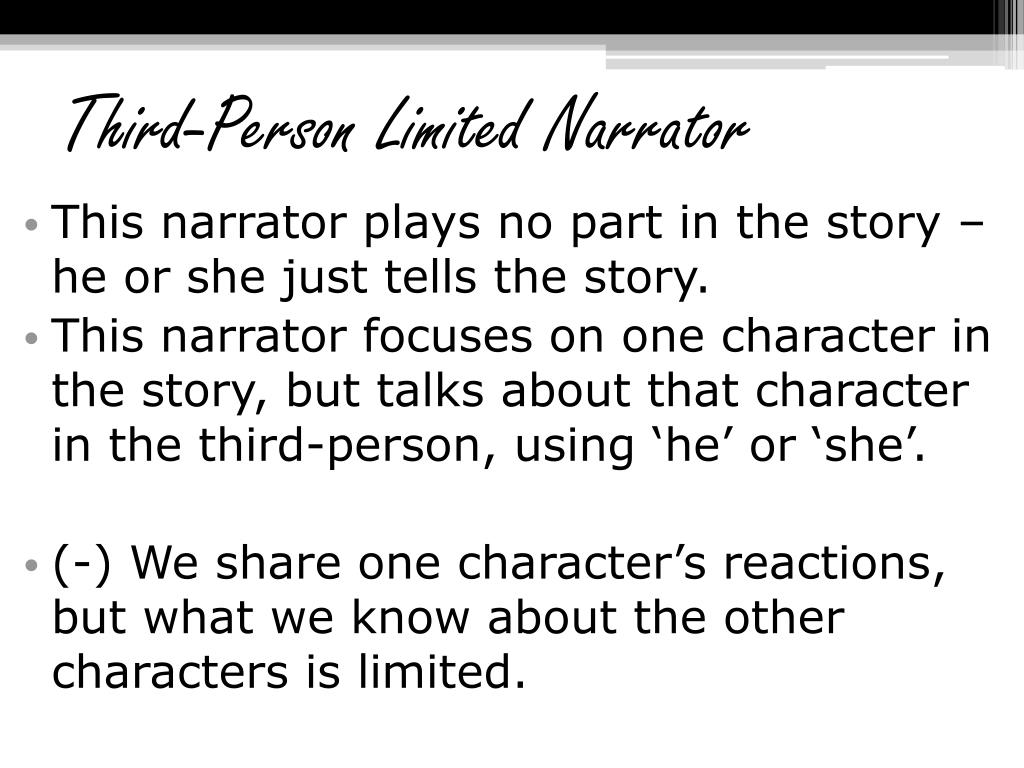
Rowling’s Harry Potter and the Half-Blood Prince is a good example of third person narration. The third person omniscient point of view is the most open and flexible POV available to writers. Jane Austen’s Pride And Prejudice is the perfect example of an omniscient third person narrator, moving seamlessly from the plight of one character to another. So the third person narrator can suddenly switch to something that's happening a hundred miles away without the character's knowledge.” “The third person is an author's voice that already knows everything about the story. “Now a lot of writers will probably go for the third person, that's very useful, that is probably the most broadly useful person to write in because the third person is omniscient,” says Alan Moore in his BBC Maestro storytelling course. The third person perspective allows you as the writer to follow an ensemble of characters and have knowledge of everything that’s going on in the story.Īlternatively you can write in close third person, or third person limited, where your narrator will stick more closely to one character and have a limited view of the thoughts, feelings and events unfolding around other characters in the story. When writing from the third person point of view your narrator is omniscient - meaning they can be everywhere all at once. “Four characters in first person is the most I would do in any one section of a story – otherwise there’s too much jumping about,” says Malorie Blackman in her BBC Maestro writing course.įamous books written from the first person perspective include The Martian by Andy Weir, Wild by Cheryl Strayed, and Never Let Me Go by Kazuo Ishiguro. But do bear in mind, this approach can become overwhelming and confusing if you have too many character voices. For example, you could have two or more characters and switch between them telling the story in alternate chapters. Third person omniscient narrators tell the story using he, she, and they, and can access the thoughts of any character. You can also use the first person perspective to tell the story from multiple different characters’ points of view. It can be argued that a first-person perspective brings you closer to the character’s thoughts and feelings but of course this entirely depends on how the story is written.” “Whether it’s first person, third person or an omniscient narrator.

“Viewpoint makes a difference,” says novelist, Malorie Blackman. The reader is experiencing the story unfolding as if they were inside the head of the protagonist, witnessing everything in the same way the main character does.


“And while it is perhaps more difficult, it does allow for some really nice literary tricks, it allows for the possibility of an unreliable narrator.” “The first person is very immediate and very powerful, it puts you right inside the character,” says writer, Alan Moore. Many novels and works of fiction use a first person perspective, since this offers the reader intimate access to the narrator’s inner thoughts and feelings.


 0 kommentar(er)
0 kommentar(er)
